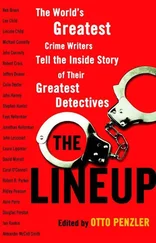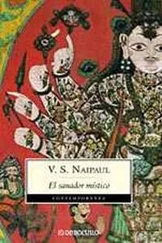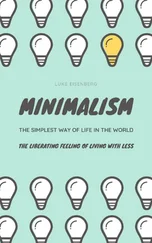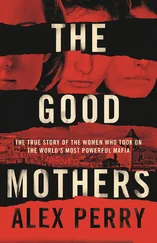For many years I had accepted that the city I had known as a child no longer existed and what was there now belonged to others. Nazaralli Baksh, who had made the clothes I had gone away in, had ceased for some time to be a name in St. Vincent Street. But to see the destruction around where his shop had been was to be reminded of him more than ever. Across the road, the Victorian Gothic Police Headquarters — he used to make uniforms for them — had been blasted in at one side. The grey outer wall, where it still stood, was blackened; smoke had poured out of the pointed arches. It was unsettling to see what had been city — regulated, serviced, protected, full of wonder and the possibility of adventure — turn to vacancy, simple ground. The commercial streets of the centre had been levelled. You could see down to what might have been thought buried forever: the thick-walled eighteenth-century Spanish foundations of some buildings. You could see the low gable marks of early, small buildings against higher walls. You could look down, in fact, at more than Spanish foundations: you could look down at red Amerindian soil.
There had been blood here before. Where the shacks of immigrants now scaffolded the hillsides there had once been aboriginal people. The eighteenth-century Spanish city had been laid out on a wilderness the Spaniards had themselves created two centuries before, when they had taken over the aboriginal settlement of Cumucurapo. The Spaniards, always legalistic, nearly always had a notary on hand to “give faith” to what he witnessed. “ Doy fe,” the notary would write: “I give faith,” “I give witness.” And there was a notary who recorded the names of the Amerindian chiefs of Cumucurapo who had surrendered their land to the Spaniards; the notary said that they had done so willingly, and that the people had “rejoiced.” The names of these chiefs were confirmed by an extraordinary accident. A short while later an English marauder came raiding. The Spaniards, who had so recently taken “true possession,” were themselves now put to flight; and, in the jail of the new Spanish settlement beyond the hills, five of the dispossessed chiefs were found, with the very names the notary had recorded, the last aboriginal rulers of the land, held together on one chain, scalded with hot bacon fat, and broken by other punishments.
3. New Clothes: An Unwritten Story
SOME WRITING ideas go cold on you when you try to work them out on the page. Other ideas you simply play with in your mind, and don’t do more about, perhaps because you know you won’t get far. Most of these unattempted ideas fade; but one or two can stay with you. This is an account of an idea that has stayed.
The first impulse came to me in the first or second week of 1961, when I was in the Guiana Highlands, an Amerindian no man’s land on the frontiers of Venezuela, Brazil and what is now called Guyana.
I hadn’t been to South America before, had never travelled in wilderness. I had never, in fact, done any kind of serious travelling; and the writing wish that came to me was less an idea for a story than an excitement about where I was.
Once for nearly a whole day I was in a small boat on a highland river, moving upstream through tall, cool woodland. The river here was the merest tributary of a tributary. It was shallow, widening out sometimes over a cluttered rocky bed, with occasional deep pools where fallen trees or branches made perfect reflections, together with big fissured boulders. These boulders, grey, scoured clean, were sometimes so neatly cracked apart — like some kind of enormous petrified fruit — that they became things of beauty in themselves. The river water was reddish (from rotting leaves and tree-bark), transparent in sunlight, and clean enough to drink.
Brightly coloured birds followed our boat. We had a man with a gun with us, an Amerindian. He fired at the birds, for sport. After every shot he looked down at the boat, at no one in particular, and gave a nervous laugh. The birds didn’t take fright; they stayed with us; you could hear their wings flapping steadily on.
Once or twice during the day we stopped at an Amerindian village. At these village sites the river bank was higher, with a ramp or path zigzagging down to where the village dugouts were tied up. The people were pale, with black hair. Animated among themselves, exchanging food and goods and news, they managed at the next moment to be distant with the rest of us: holding themselves with an extraordinary stillness on their tree-shaded bank, and looking down without expression at the boat.
That was the setting. I would have liked to do something with it, but every piece of invention that came to me seemed to falsify what I had felt as a traveller.
Six or seven years later, when I was writing another kind of book, I did some detailed reading about the area. I went back to the earliest records, concentrating on the period between 1590 and 1620. Among the Spanish documents were accounts of the formal foundation of Spanish towns in Amerindian wilderness, reports of expeditions (most of them ending in death or despair), petitions of colonists to the king (read by the king or an official perhaps a full year later): curiously informal and fresh, these old Spanish cries from the other end of the world, the complaints and deceptions of hungry, quarrelsome, self-righteous, stoical people.
I looked also at the accounts of foreign adventurers. Foreigners — other Europeans — were barred by Spanish law from the Spanish empire. They risked death or the Inquisition if they were picked up. But this was a neglected corner of the Spanish empire, and the interlopers, as they were called, kept on coming, from France and Holland and England. Most came to trade (bringing in African slaves, taking out salt or tobacco); but a few had the idea of setting up colonies or kingdoms of their own, and came to find allies and subjects among the Indians.
I wondered at the fortitude of all these people. I remembered what I had first seen of the continent, a very small corner of it, from the low-flying aeroplane in the last week of 1960: miles of muddy wild beach with collapsed big trees where perhaps no traveller had set foot and no tourist ever would; tight forest; the vast half-drowned confusion of meandering rivers. It would have been achievement enough to get there and survive. The people whose words I was reading went there to intrigue, to look for gold, to fight.
A story shaped in my mind, over some years. But it never clothed itself in detail, in the “business” necessary to a narrative, even though this business fades as the narrative moves on — much as the oil or alcohol that carries a longer-lasting perfume fades.
My idea remained an idea, and (partly working it out for the first time) I write it down here.
THE NARRATOR is going up a highland river in an unnamed South American country. Who is this narrator? What can he be made to be? This is often where fiction can simply become false.
To make the narrator a writer or traveller would be true to the actual experience; but then the fictional additions would be quite transparent. Can the narrator be a man in disguise, a man on the run? That would be true about the region. In 1971 Michael X, the Trinidad Black Power man, after he had killed two people in Trinidad, went to Guyana (physically like the country of the narrative) and made for the interior, to hide. And many years before, one of the last men of the Frank James gang, looking for a sanctuary outside the United States, fetched up in the Guiana savannah country, lower down from the forest. (So I had heard when I went there on my own journey. Local people were proud of the connection; and I, too, thought it glamorous, having seen as a child the Tyrone Power and Henry Fonda films about Frank and Jesse James.)
Читать дальше












